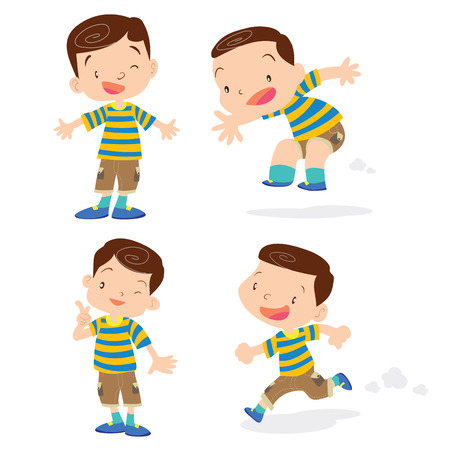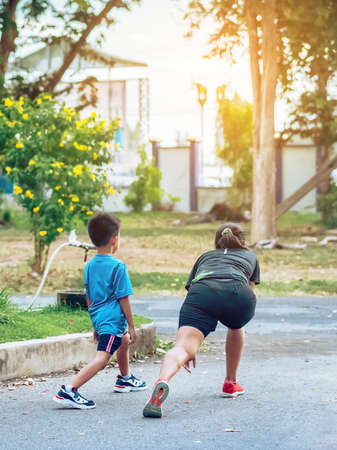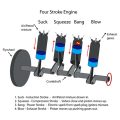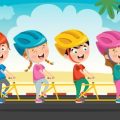Overview of Cerebral Palsy and Gross Motor Impairments
Cerebral palsy (CP) is a group of neurological disorders that affect movement, muscle tone, and posture. It happens when a child’s brain develops abnormally or is damaged, most often before birth or soon after. CP can make it difficult for kids to control their muscles, which affects how they move their arms, legs, and bodies.
Gross motor skills are the abilities needed to control large muscle groups for activities like sitting, crawling, standing, and walking. For children with cerebral palsy, these skills may develop more slowly or differently compared to other children. They may have trouble balancing, coordinating movements, or using both sides of their body together.
How Cerebral Palsy Affects Gross Motor Skills
| Type of Gross Motor Challenge | Common Examples in Children with CP |
|---|---|
| Muscle Stiffness (Spasticity) | Difficulty straightening arms or legs; moving slowly or stiffly |
| Poor Coordination (Ataxia) | Trouble with balance; shaky movements when reaching for objects |
| Uncontrolled Movements (Dyskinesia) | Sudden or jerky motions; unable to hold positions steadily |
| Weak Muscle Strength | Fatigue during play; unable to jump or run easily |
Cerebral Palsy Prevalence in the United States
Cerebral palsy is the most common motor disability in childhood in the United States. According to the Centers for Disease Control and Prevention (CDC), about 1 in 345 children has been diagnosed with CP. The condition can range from mild to severe. Some children might need a wheelchair or assistive devices, while others can walk independently but may still have trouble with certain movements.
Key Facts at a Glance
- What is CP? A lifelong condition affecting movement and posture.
- How common is it? About 1 in every 345 children in the U.S.
- Main challenges: Trouble controlling muscles, especially for big movements like walking or jumping.
- Why physical therapy? To help kids gain strength, coordination, and independence in everyday activities.
Assessment and Goal Setting in Pediatric Physical Therapy
Effective physical therapy for children with cerebral palsy starts with a thorough assessment and personalized goal setting. In the United States, therapists use a variety of standardized tools to measure a childs gross motor skills and track progress over time. These assessments help guide treatment and make sure that each child receives care tailored to their unique needs.
Common Standardized Assessments in the US
Pediatric physical therapists in the US often use well-established assessments to evaluate gross motor function. These tools provide objective information about a childs strengths and areas for improvement. Here are some of the most widely used:
| Assessment Tool | Purpose | Age Range |
|---|---|---|
| Gross Motor Function Measure (GMFM) | Evaluates changes in gross motor function over time; specifically designed for children with cerebral palsy | 5 months – 16 years |
| Pediatric Evaluation of Disability Inventory (PEDI) | Assesses functional capabilities and performance in daily activities | 6 months – 7.5 years (can be used for older children with delays) |
| Peabody Developmental Motor Scales (PDMS-2) | Measures both fine and gross motor skills for identifying developmental delays | Birth – 5 years |
| Bruininks-Oseretsky Test of Motor Proficiency (BOT-2) | Evaluates motor proficiency, including balance, coordination, strength, and agility | 4 – 21 years |
Collaborative Goal Setting with Families
Pediatric physical therapists work closely with families to set meaningful goals. Collaboration ensures that therapy is focused on activities that matter most to the child’s daily life—like playing at the playground, walking at school, or participating in sports. Therapists encourage parents and caregivers to share their hopes and concerns. Together, they create achievable short-term and long-term goals that motivate the child and guide therapy sessions.
Key Aspects of Collaborative Goal Setting
- Family-Centered Approach: Families are experts on their child’s needs, routines, and preferences.
- S.M.A.R.T Goals: Goals are Specific, Measurable, Achievable, Relevant, and Time-bound.
- Cultural Sensitivity: Therapists respect family values, traditions, and priorities when developing therapy plans.
Tailoring Evaluations to Each Child’s Needs
No two children with cerebral palsy are exactly alike. Therapists take into account each child’s age, type of CP, current abilities, and daily environment when planning evaluations. Some kids may need more support with walking or standing, while others might focus on balance or coordination. Therapists adjust their assessment techniques to match each child’s comfort level—making evaluations fun by using toys or games whenever possible.
Personalized Assessment Tips:
- Create a relaxed atmosphere to reduce anxiety.
- Select assessment tools based on the child’s age and abilities.
- Observe how the child moves during play or typical routines.
- Ask families about challenges at home or school to guide assessment focus.
This individualized approach helps ensure that every child receives the right support to improve their gross motor skills and reach their full potential in everyday life.

3. Evidence-Based Physical Therapy Interventions
Overview of Common Approaches
For children with cerebral palsy (CP), improving gross motor function is a key goal in physical therapy. In the United States, therapists use a variety of evidence-based approaches to help kids move better and become more independent. Here are some of the most commonly used strategies:
| Approach | Main Focus | Common Techniques | Benefits for Children with CP |
|---|---|---|---|
| Neurodevelopmental Treatment (NDT) | Facilitate normal movement patterns | Guided practice, hands-on facilitation, posture training | Improves quality of movement, reduces abnormal muscle tone |
| Constraint-Induced Movement Therapy (CIMT) | Encourage use of weaker limb | Restrict stronger arm, repetitive tasks with affected arm | Boosts strength and skills in the weaker side, especially for kids with hemiplegia |
| Task-Specific Training | Practice real-life activities | Walking, standing up from a chair, climbing stairs | Increases independence and confidence in daily activities |
Neurodevelopmental Treatment (NDT)
NDT is one of the most traditional approaches used by American physical therapists. This hands-on method helps children learn more natural ways to move by guiding them through proper posture and movement patterns. Therapists often provide physical support and cues so that kids can feel what correct movement should be like. This approach is especially helpful for children who have spasticity or trouble coordinating their muscles.
Constraint-Induced Movement Therapy (CIMT)
CIMT is designed mainly for children who have weakness on one side of their body, which is common in some forms of CP. During CIMT, the child’s stronger arm is gently restrained using a soft mitt or cast, while they practice activities using their weaker arm. This therapy encourages the brain and muscles on the affected side to work harder, leading to improved control and function over time.
Task-Specific Training
This approach focuses on helping children practice real-world skills that matter most to them. For example, if a child wants to be able to walk across the playground or get up from the floor independently, therapy sessions will include lots of practice on those specific tasks. Repetition and encouragement help build strength, coordination, and confidence.
Key Takeaways for Families in the U.S.
No two children with cerebral palsy are exactly alike. That’s why American physical therapists often combine different evidence-based approaches to create a personalized plan for each child. Collaboration between families and therapists is crucial—parents are encouraged to share their goals and participate in their child’s therapy whenever possible.
4. Family Involvement and Home Program Integration
The Importance of Family-Centered Care
In the United States, family-centered care is a cornerstone of pediatric physical therapy for children with cerebral palsy (CP). This approach recognizes that families know their children best and play a key role in supporting their child’s development. Physical therapists work closely with parents, siblings, and other caregivers to set goals and create treatment plans that fit the unique needs of each family. When families feel heard and involved, they are more likely to follow through with therapy activities and celebrate progress together.
Working Together With Caregivers
Building strong partnerships between therapists and caregivers is essential for successful outcomes. Therapists often use collaborative coaching, which means teaching caregivers how to help their child practice movements and exercises in daily routines. This hands-on support can happen during clinic visits or through telehealth sessions, making it easier for families to learn at home. Open communication helps everyone stay on the same page and adjust strategies as needed.
Tips for Effective Collaboration
| Tip | How It Helps |
|---|---|
| Set clear, realistic goals | Keeps everyone motivated and focused |
| Use simple instructions | Makes exercises easier for caregivers to remember and teach |
| Provide written or video guides | Supports learning outside of therapy sessions |
| Check in regularly | Addresses challenges early and celebrates progress |
| Encourage questions | Builds trust and confidence in caregivers’ abilities |
Developing Practical Home Exercise Programs for American Families
Home exercise programs are most successful when they fit seamlessly into everyday life. For many American families, this means integrating activities into routines like morning prep, after-school time, or evening wind-down. Therapists help families choose exercises that match their schedule, space, and available equipment—often using household items such as pillows, chairs, or toys. The key is to keep exercises fun, short, and easy to repeat so children stay engaged.
Examples of Home-Based Gross Motor Activities
| Activity | Description | When To Do It | Common Equipment |
|---|---|---|---|
| Pillow Walking Path | Create a path with pillows for balance practice | After school or before dinner | Pillows/cushions from the couch or bed |
| Toy Reach & Stretch Game | Place favorite toys just out of reach to encourage crawling or walking | During playtime in the living room or bedroom | Toys, small table or chair if needed for support |
| Obstacle Course Adventure | Set up an obstacle course using furniture to climb over or around | Weekend mornings or family game nights | Chairs, blankets, boxes, stuffed animals |
| Dancing to Music Videos | Dancing encourages movement and balance in a fun way | Evening before bedtime or as a break from homework/screen time | YouTube videos, speakers/tablet/TV for music playback |
| Laundry Basket Push & Pull | Pushing or pulling a laundry basket builds strength and coordination | Laundry day or while tidying up together | Laundry basket with towels or clothes inside |
Making Progress Together as a Family
The involvement of family members doesn’t just make therapy more effective—it also turns everyday moments into opportunities for growth. By working as a team with physical therapists, American families can help their children with CP improve gross motor function in ways that are meaningful and manageable within their busy lives.
5. Community Resources and Inclusive Activities
Overview of Community Supports in the US
For children with cerebral palsy (CP), community resources play a vital role in supporting physical therapy goals and promoting participation in everyday life. Across the United States, there are various organizations, programs, and initiatives dedicated to helping children with CP improve their gross motor function outside of traditional clinical settings.
Adaptive Sports Programs
Adaptive sports offer opportunities for children with CP to stay active, build confidence, and socialize with peers. Many communities have local or regional adaptive sports programs that include activities such as:
| Sport/Activity | Description | Example Organizations |
|---|---|---|
| Wheelchair Basketball | Team sport adapted for wheelchair users, focusing on coordination and teamwork. | National Wheelchair Basketball Association (NWBA) |
| Adaptive Swimming | Swimming lessons and competitions tailored for all abilities. | Swim Angelfish, YMCA Adaptive Aquatics |
| Sled Hockey | Ice hockey played using specially designed sleds for players with mobility challenges. | USA Hockey Sled Hockey Program |
| Track & Field | Running, walking, and throwing events modified for different ability levels. | Special Olympics, Paralympic Sports Clubs |
Inclusive Playgrounds
Inclusive playgrounds are designed so that children of all abilities can play together. These spaces have ramps, sensory play equipment, accessible swings, and soft ground surfaces. Inclusive playgrounds encourage movement, balance practice, social interaction, and fun in a safe environment. Examples of national initiatives supporting inclusive playgrounds include:
- KaBOOM!: Helps communities build accessible playgrounds.
- Boundless Playgrounds: Designs universally accessible play spaces across the US.
- The Miracle League: Offers accessible baseball fields for children with disabilities.
Partnerships with Local Organizations
Physical therapists often collaborate with local schools, parks departments, YMCAs, and non-profit organizations to provide integrated support for children with CP. These partnerships help families find:
- Recreation programs: Adapted dance classes, martial arts, or gymnastics for kids with varying needs.
- Camps: Summer camps or day camps specifically designed for children with physical disabilities.
- Support groups: Parent networks and peer groups that share information about therapy strategies and local events.
- Therapeutic riding centers: Equine-assisted activities to promote strength and balance.
How to Find Resources Near You
- Pediatrician or Physical Therapist Referrals: Ask your healthcare providers for recommendations based on your child’s needs.
- Online Directories: Use websites like Kids Included Together (KIT) or National Center on Health, Physical Activity and Disability (NCHPAD).
- Local School Districts: Many school districts offer after-school inclusive recreation options.
The Importance of Community Participation
Engaging in community activities not only supports physical therapy goals but also boosts self-esteem and builds friendships. Accessing these resources helps children with cerebral palsy take an active role in their community while continuing to develop essential gross motor skills.


